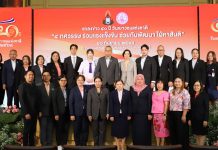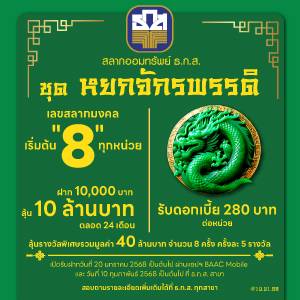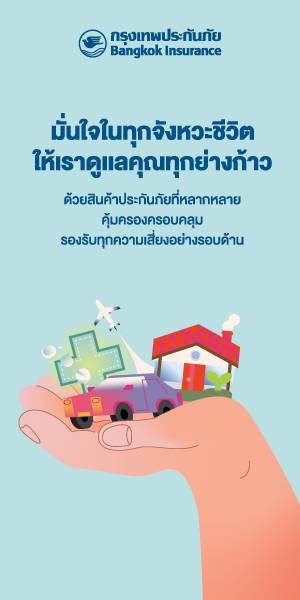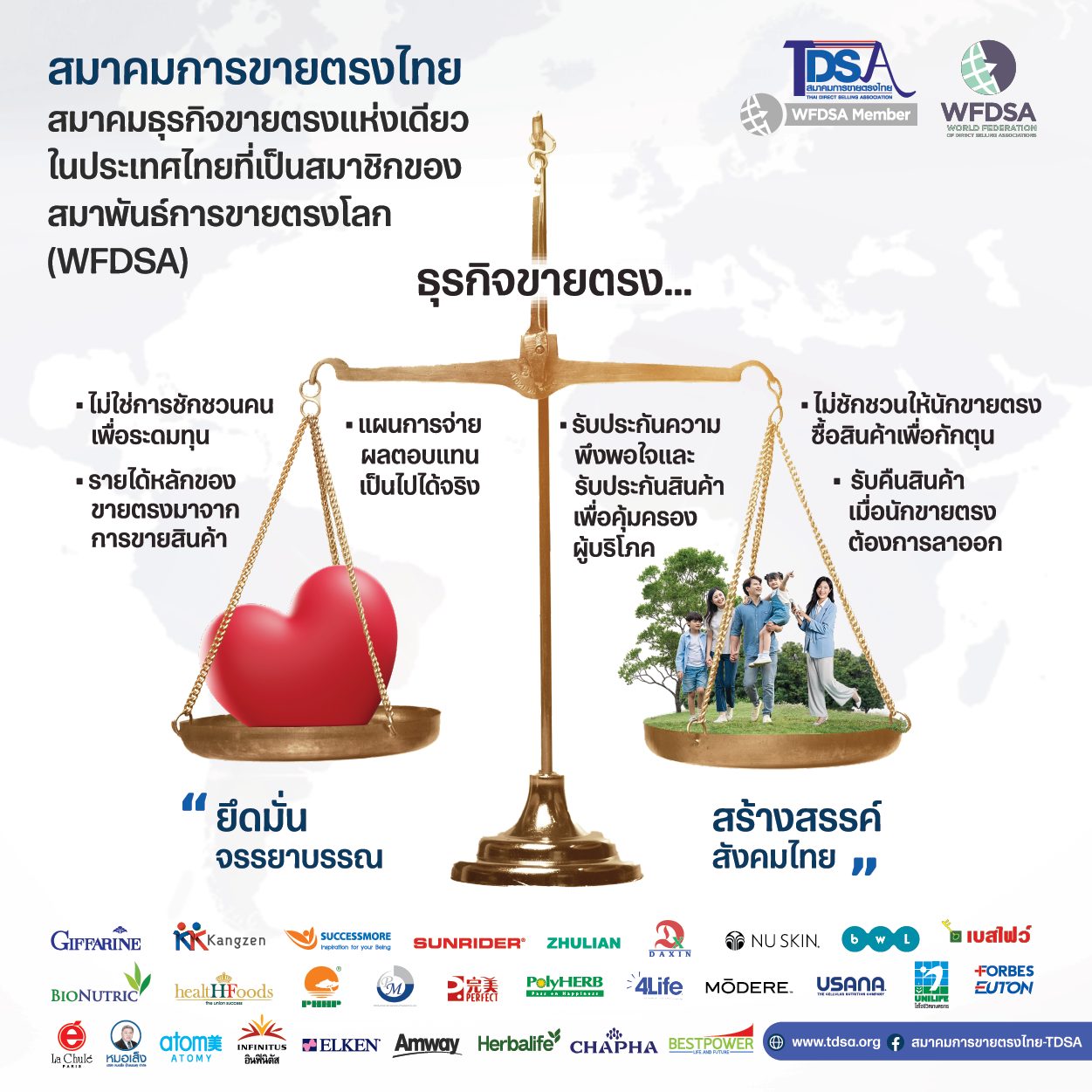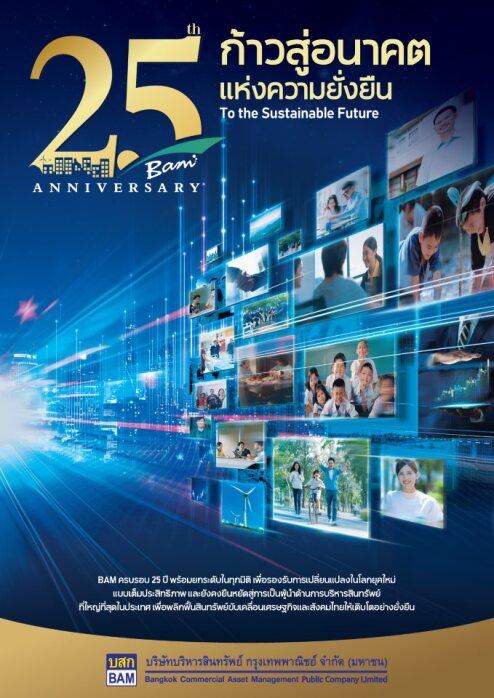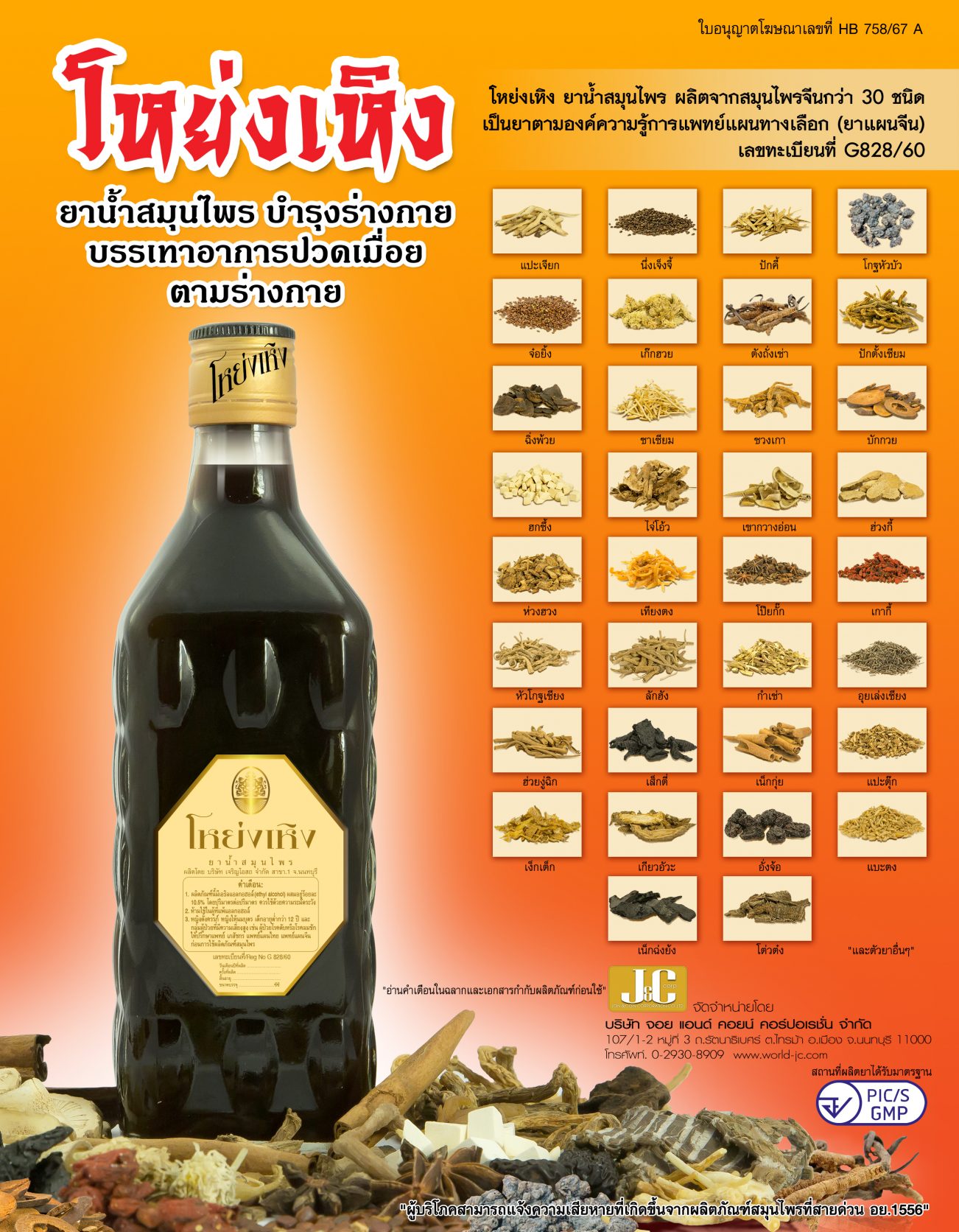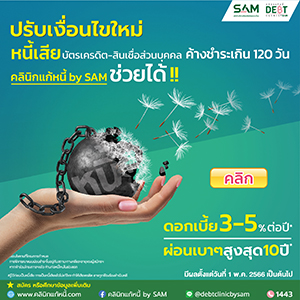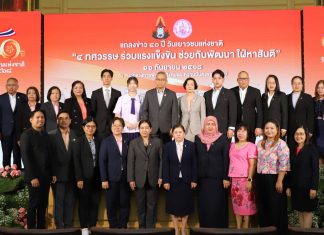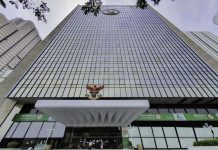กิจกรรมทางเศรษฐกิจของไทยมีแนวโน้มกลับสู่ระดับก่อนการระบาดในช่วงครึ่งหลังปี 2565 โดยเศรษฐกิจในปี 2564 คาดว่าจะขยายตัว 1.2% (เดิมคาด 0.6%) จากการฟื้นตัวของเศรษฐกิจในไตรมาสสุดท้ายที่คาดว่าจะกลับมาเติบโตได้ราว 1.5% QoQ (จาก -1.1% ในไตรมาส 3) หรือ +0.8% YoY ปัจจัยหนุนจากการปรับดีขึ้นของกิจกรรมทางเศรษฐกิจในประเทศตามการผ่อนคลายมาตรการควบคุมการระบาด และความคืบหน้าของการฉีดวัคซีนที่เร่งขึ้น ผนวกกับยังมีแรงส่งจากมาตรการภาครัฐเพื่อสนับสนุนการใช้จ่ายและท่องเที่ยวในประเทศ รวมถึงการเปิดประเทศรับนักท่องเที่ยวต่างชาติ (ล่าสุดวันที่ 1-20 พฤศจิกายน จำนวนรวม 80,017คน) ทำให้ทั้งปีคาดว่าจะมีนักท่องเที่ยวต่างชาติรวม 0.35 ล้านคน (เดิมคาด 0.15 ล้านคน) อีกทั้งการส่งออกยังเติบโตดีต่อเนื่องตามการฟื้นตัวของอุปสงค์ประเทศคู่ค้า และการผ่อนคลายลงของภาวะชะงักงันของห่วงโซ่อุปทานในภูมิภาค ส่งผลให้การส่งออกในปีนี้คาดว่าจะขยายตัวสูงที่ 16.5% (เดิมคาด 15.0%)
สำหรับปี 2565 คาดว่าเศรษฐกิจไทยจะเติบโตต่อเนื่องที่ 3.7% (เดิมคาด 3.0%) และมีแนวโน้มที่ GDP จะกลับมาอยู่ในระดับก่อนเกิดการระบาดได้ในช่วงครึ่งหลังของปี แรงขับเคลื่อนเศรษฐกิจสำคัญมาจากทั้งภายในและภายนอกประเทศ โดยการบริโภคภาคเอกชนมีแนวโน้มปรับดีขึ้นแต่การฟื้นตัวยังมีความแตกต่าง คาดว่าในปี 2565 จะเติบโตราว 3.6% จากการฟื้นตัวของกิจกรรมทางเศรษฐกิจในประเทศ ตามการผ่อนคลายมาตรการควบคุม การฉีดวัคซีนที่เพิ่มมากขึ้น และมาตรการภาครัฐที่อาจเป็นปัจจัยหนุนในระยะสั้นอยู่บ้าง แต่การใช้จ่ายอาจขยายตัวได้จำกัดเนื่องจากยังมีความเปราะบางในตลาดแรงงาน และคาดว่าค่าจ้างเฉลี่ยโดยรวมในปี 2565 จะเพิ่มขึ้น แต่ยังอยู่ต่ำกว่าระดับก่อนเกิดการระบาด นอกจากนี้ การฟื้นตัวที่ยังไม่กระจายไปในทุกพื้นที่ ทุกกลุ่มรายได้ และทุกสาขา จะส่งผลต่อค่าจ้างและการใช้จ่ายของแรงงานในกลุ่มที่ได้รับผลกระทบหนักจากวิกฤตการระบาด โดยเฉพาะกลุ่มที่เกี่ยวข้องกับภาคท่องเที่ยวเป็นสำคัญ
ด้านภาคส่งออกแม้จะชะลอลงบ้างแต่คาดว่ายังเติบโตได้ 5.0% ซึ่งสูงกว่าค่าเฉลี่ยในช่วงทศวรรษที่ผ่านมาที่ขยายตัว 2.9% แรงหนุนจากการฟื้นตัวของเศรษฐกิจโลกหลังจากมีการฉีดวัคซีนอย่างกว้างขวางมากขึ้น กอปรกับผลบวกจากการรวมกลุ่มระหว่างประเทศภายในภูมิภาคเดียวกัน (Regionalization) โดยเฉพาะ RCEP ซึ่งจะมีผลบังคับใช้ต้นปี 2565 น่าจะมีส่วนเสริมภาคการค้าในระยะถัดไป จากผลการศึกษาของ ADB ประเมินว่า RCEP จะช่วยหนุนให้มูลค่าส่งออกของไทยเพิ่มขึ้น 4.9% ภายในปี 2573 ซึ่งแม้เป็นรองญี่ปุ่นและเกาหลีใต้ แต่สูงสุดเมื่อเทียบในกลุ่มอาเซียน ขณะเดียวกันการลงทุนภาคเอกชนคาดว่าเติบโตดีขึ้นเป็น 4.6% อานิสงส์จากการฟื้นตัวของอุปสงค์ทั้งในและต่างประเทศ จะช่วยหนุนให้เกิดวัฏจักรขาขึ้นของการลงทุน เพื่อตอบสนองความต้องการในชีวิตแบบวิถีใหม่ (New normal) และการก้าวไปสู่โลกดิจิทัลมากขึ้น สอดคล้องกับสัญญาณเชิงบวกจากเงินลงทุนสุทธิโดยตรงจากต่างประเทศที่ไหลเข้าไทยเพิ่มขึ้นในช่วงครึ่งแรกของปี 2564 ซึ่งมีมูลค่าสูงกว่าทั้งปี 2562 (ช่วงก่อนเกิดการระบาด) นอกจากนี้ การเร่งรัดโครงการลงทุนโครงสร้างพื้นฐานจะช่วยเหนี่ยวนำให้เกิดการลงทุนของภาคเอกชน ซึ่งโครงการโครงสร้างพื้นฐานขนาดใหญ่จะมีรูปแบบเป็นการร่วมลงทุนระหว่างภาครัฐและภาคเอกชน (PPP) เป็นส่วนมาก (มีสัดส่วนกว่า 80% ของมูลค่าการลงทุนโครงสร้างพื้นฐานขนาดใหญ่ในช่วงปี 2565-2569) อย่างไรก็ตาม ภาคท่องเที่ยวยังมีแนวโน้มฟื้นตัวอย่างช้าๆ แม้ไทยจะมีนโยบายเปิดประเทศรับนักท่องเที่ยวต่างชาติกว่า 60 ประเทศแบบไม่ต้องกักตัวมาตั้งแต่ต้นเดือนพฤศจิกายน 2564 แต่การฟื้นตัวของนักท่องเที่ยวต่างชาติอาจยังมีข้อจำกัดเนื่องจากสถานการณ์การระบาดที่ยังมีความไม่แน่นอน ส่งผลให้หลายประเทศที่เป็นตลาดนักท่องเที่ยวที่สำคัญของไทยยังมีมาตรการคุมเข้มการเดินทางระหว่างประเทศอยู่ ทำให้จำนวนนักท่องเที่ยวต่างชาติในปี 2565 คาดว่าจะอยู่ที่ 7.5 ล้านคน และกว่าจะกลับมาสู่ระดับก่อนเกิดการระบาดได้ที่ 40 ล้านคน อาจต้องใช้เวลาถึงปี 2568 ขณะที่การท่องเที่ยวในประเทศคาดว่าจะสามารถกลับสู่ระดับก่อนเกิดการระบาดได้เร็วกว่าคือในปี 2567 ที่ 160 ล้านทริป จากปี 2565 ซึ่งคาดว่าจะอยู่ที่ 90 ล้านทริป
ข้อมูลเพิ่มเติม
วิจัยกรุงศรี: https://www.krungsri.com/th/research/home
อีเมล: krungsri.research@Krungsri.com
Thailand is taking first steps on the path to recovery despite an uneven course;
Krungsri Research projects Thai GDP growth at 1.2% in 2021 and 3.7% in 2022
Thai economic activity is expected to return to its pre Covid-19 level in 2H22. 2021 economic growth is now expected to reach 1.2% (against the earlier prediction of 0.6%) thanks to stronger recovery in Q4 that is forecast to reach 1.5% QoQ (compared to -1.1% in Q3) or +0.8% YoY. The economy is benefitting from the relaxation of control measures, an acceleration in the rollout of vaccinations, government stimulus spending, an improving outlook for domestic tourism, and the reopening of the country. Thus, for 1-20 November, 80,017 foreign arrivals were recorded, which will take total 2021 tourist arrivals to around 350,000, against the earlier prediction of a total of 150,000. Exports are also seeing solid rates of growth as demand strengthens in export markets and supply bottlenecks ease, and so for 2021 overall, exports are forecast to increase 16.5% (up from 15.0% in the previous forecast).
We see the Thai economy growing by 3.7% in 2022, up from our earlier prediction of 3.0%, and this should bring Thailand’s GDP level back to its pre-pandemic size during 2H22. Key drivers would be a recovery in economic activity at home and abroad. Private consumption would improve at an uneven pace with growth of 3.6% in 2022. Although the relaxation of control measures, the success of the domestic vaccination program, and government stimulus spending will help over the short term, labor markets remain weak. We expect average wage in 2022 to rise but still below pre-pandemic level. Recovery is also patchy in terms of region, income group and business sector, and so income and expenditure in harder hit sectors will remain weak, especially in services connected to the tourism sector.
For Thai export outlook, despite a slowdown, we project 2022 export growth at 5.0%, higher than average of 2.9% during 2001- 2019 (pre-pandemic), supported by the widespread success of vaccination programs and recovery in the world economy. In addition, Thailand will benefit from greater regionalization, and especially from the enforcement from 2022 of the RCEP. This will tend to boost trade, and research by the Asian Development Bank (ADB) indicates Thailand would see incremental exports of 4.9% by 2030 following gains in Japan and South Korea, and would register larger gains than other ASEAN countries. Alongside this, private investment would rise 4.6% on recovery in domestic and external demand, which will then spur a new investment cycle as businesses respond to the ‘new normal’ and accelerating digitalization. Net inflows of foreign direct investment (FDI) for 1H21 increased and above the level for the whole of 2019. Pushing ahead with government infrastructure spending will help to pull in greater private investment, with most projects organized as public-private partnerships (over 80% of infrastructure investment during 2022-2026 are PPPs). For the tourism sector, there are signs of nascent recovery. Although Thailand reopened to quarantine-free travel from over 60 countries in November, the recovery could be disrupted by continuing uncertainty over the spread of Covid-19 and travel restrictions in many of Thailand’s major tourism markets. Given this, we see foreign arrivals totaling 7.5m in 2022 and we do not expect the sector to return to its pre-Covid-19 total of 40m arrivals until 2025. Domestic tourism will recover ahead of this, and following an expected 90m domestic trips in 2022, the industry is forecast to record 160m domestic trips (equal to its pre-pandemic level) in 2024.
For more information
Krungsri Research: https://www.krungsri.com/th/research/home
Email: krungsri.research@Krungsri.com





